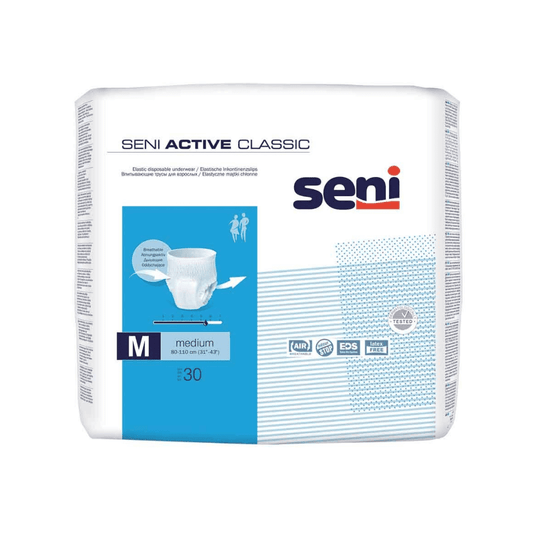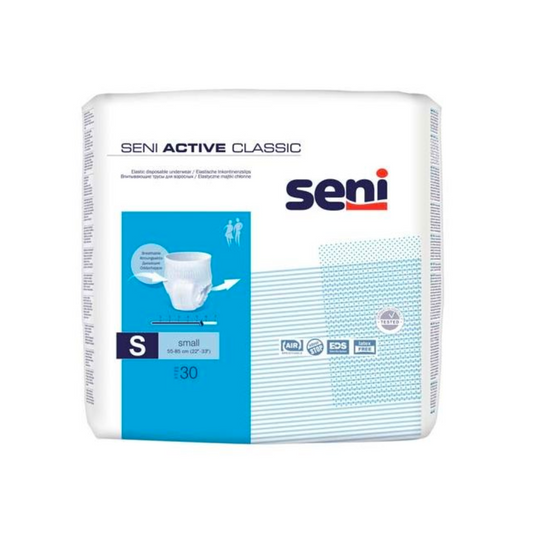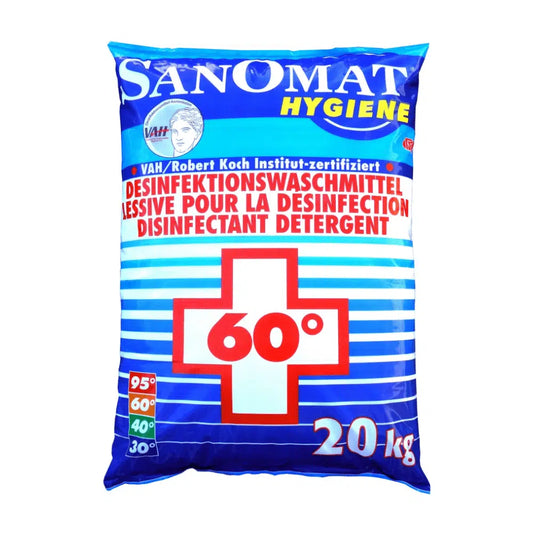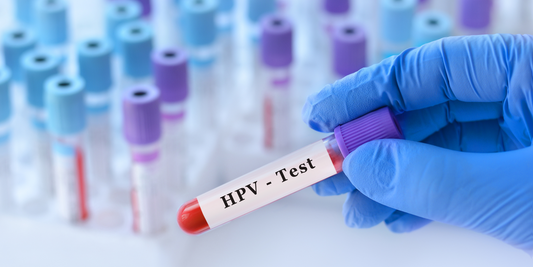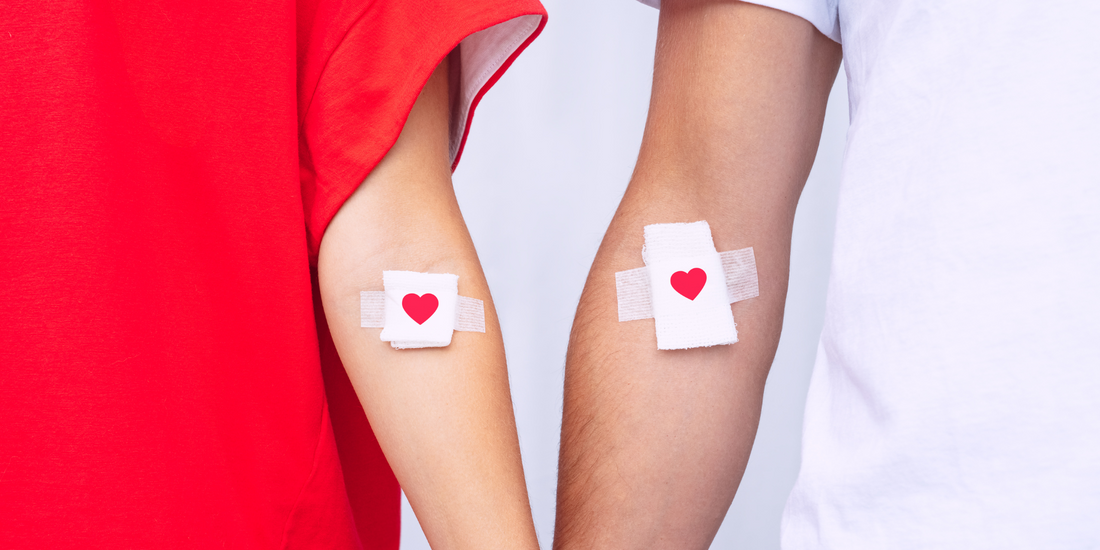
World Blood donation day 2024 - All important questions and answers about the blood donation
Today's “World Blood Donation Day” we want to take them as an opportunity to inform them about blood donation. Are you a blood donor yourself and make an important contribution to the common good? Or are you even one of those who have already received a blood donation? Do you actually know your own blood group?
Only about 3% of the population donate regularly in Germany. The daily need for blood donations in Germany is around 15,000 to ensure the care of the patients in the clinics. There is a high demand for blood donations in order to be able to cover the daily medical needs in the long term. Every single person counts - they too!
Why should I donate blood?
Reasons for the blood donation:
- save lives: Each blood donation can save up to three lives because the blood is divided into its components (red blood cells, plasma and thrombocytes).
- Medical care: Donations of blood are essential for operations, accident victims, cancer treatments and chronic diseases.
- Own health: Regular donors are medically examined before each donation, which can contribute to the early detection of health problems.
- Community support: Due to the blood donation, you make an important contribution to the medical care of your community.
- Gratitude and reward: Many people feel gratitude and a feeling of fulfillment through the altruistic act of donating blood. There are also allowances in some countries.

What is a thoroughbred donation?
With a blood donation, about 500 milliliters of blood is usually removed. This includes all blood components (erythrocytes, leukocytes, thrombocytes, blood plasma). This amount corresponds to about half a liter and is well tolerated for a healthy adult. The exact amount can vary slightly, depending on the guidelines of the respective country or the blood donation device. Since the body needs a certain amount of regeneration, the distance between two blood donations must be at least 8 weeks. Women are allowed to donate blood four times a year, but men six times. This can be explained with the lower hematocrit value, which means that women have a lower number of erythrocytes (red blood cells). A blood you will have a maximum shelf life of 42 days.
Alternatives to the full blood donation
In addition to the full blood donation, there are also other forms of the blood donation, such as the plasma donation and the platelet donation, in which different amounts and components of the blood are taken:
- Plasma donation: With a plasma donation, only the plasma, the liquid yellowish proportion of the blood. It is typically dependent on the body weight of the donor, between 600 and 800 ml of plasma. This consists of 90% water. The rest are nutrients, hormones, minerals and more than 120 different protein fabrics. And takes on vital tasks in the body as transport and storage medium. The remaining blood and therefore not required blood components (erythrocytes, leukocytes and platelets) are returned to the donor. Valuable fabrics for medicines that are required to treat life -threatening diseases are obtained from the blood plasma, for example in the case of blood coagulation disorders or immune defense weakness. The donation interval is significantly shorter than in full blood donation. Up to 60 plasma donations can be done per year. There must be at least 2 days between the donations. The German Red Cross recommends a distance of 7 days.
-
Platelet donation: The platelets (thrombocytes) are collected during the platelet donation, while the red blood cells and the plasma are returned. The thrombocytes are very important when wounding, blood clotting and immune deficiency. Most of the time, people who suffer from leukemia or other cancer are given a platelet donation because they can no longer reproduce blood plates on their own. This occurs, for example, after a bone marrow transplantation or after serious accidents or liver transplants. The recommended donation interval is 14 days, so that max. 25 donations can be made per year. The shelf life of platelets is only 4 days. The process is comparable to that of the plasma donation. Thrombocytes and a proportion of plasma are filtered out of the blood. Remaining components are returned to the body.
In order to be able to distinguish the three procedures, a corresponding overview helps in which all three procedures are compared directly.
|
criteria |
Thoroughbred donation |
Plasma donation |
Platelet donation |
|
Donation volume |
500 ml |
600-800 ml plasma |
Individually |
|
Duration of the procedure |
10-15 minutes |
45-60 minutes |
60-120 minutes |
|
Frequency of donations |
Every 8-12 weeks |
3-7 days |
14 days |
|
Use of the donation |
Emergles, operations, anemia |
Burns, coagulation disorders, shock |
Cancer patients, transplants, heavy bleeding |
|
durability |
42 days |
Up to 2 years (frozen) |
4 days |
|
Who can donate |
Healthy adults, 18-65 years, at least 50 kg |
Healthy adults, 18-65 years, at least 50 kg |
Healthy adults, 18-65 years, at least 50 kg |
|
Allowance |
No |
Yes |
Yes |
What is the rhesus factor and why is it so important?
The rhesus factor (RH-factor) is a protein that can be present on the surface of the red blood cells. When the protein is present, the blood group is referred to as RH-positive (RH+); If there is no RH-negative (RH-). The rhesus factor plays an important role in blood transfusions and pregnancies.
Rhesus factor and blood transfusions:
- RH-positive (RH+): People with RH+ blood can be preserved both RH+ and RH-Blut.
- RH-negative (RH-): People with RHE Blue may only receive rh-blood because a transfusion of RH+ blood can lead to an immunological reaction.
Rhesus factor and pregnancy:
The rhesus factor is also important for pregnancies. If a RH-negative mother expects a RH-positive child, complications can occur, especially in the following pregnancies, since the mother's body can develop antibodies against RH-positive cells. Therefore, pregnant rhine-negative women is often given anti-D immunoglobulin injection (anti-D prophylaxis) to prevent this immune reaction.
In summary, the rhesus factor is a decisive factor in blood groupomatability and must be carefully taken into account in blood transfusions and pregnancies.
Who can receive which blood?
This table illustrates the compatibility of blood groups taking into account the rhesus factor. Rh-negative recipients must make sure that only RH-negative blood is obtained in order to avoid immunological reactions. Rh-positive receivers, on the other hand, have more flexibility and can preserve both rh-positive and rh-negative blood.
|
Recipient |
Can receive blood from: |
|
0- |
0- |
|
0+ |
0-, 0+ |
|
A- |
0-, A- |
|
A+ |
0-, 0+, A-, A+ |
|
B- |
0-, B- |
|
B+ |
0-, 0+, B, B+ |
|
AWAY- |
0-, A-, B-, |
|
AB+ |
0-, 0+, A-, A+, B, B+, ab-, from+(all blood groups) |
Example of compatibility:
- Person with blood group A- can receive blood from donors with the blood groups A and 0-.
- Person with blood group A+ can receive blood from donors with the blood groups A+, A, 0+ and 0-.

Who can donate blood and what is new?
Requirements for blood donors:
- health status: The donor must be healthy and free of infectious diseases.
- Old: Donors must be between 18 and 65 years old. As a rule, first donors must not be older than 60 years, regular donors can donate up to 68 years or older, depending on the assessment by a doctor. The average age of the blood donors is around 48 years, while the average age of the first donors is 32.9 years.
- Weight: Minimum weight of 50 kg
- Blood pressure and hemoglobin value: The blood pressure must be in a normal area and the hemoglobin value should be sufficiently high.
- Distances between the donations: Women can donate blood every 12 weeks and men every 8 weeks.
- Changes in Germany: Since September 2021, homosexual men have been able to donate blood in Germany if they had no new sexual partner for at least four months. This adaptation was made to reduce discrimination and yet to ensure the safety of blood supply
Who is excluded from the blood donation?
Exclusion criteria:
- Infectious diseases: People with hepatitis B, hepatitis C, HIV or other infectious diseases
- Taking medication: Certain medication can lead to a temporary or permanent exclusion
- Risk behavior: People with a high risk of sexually transmitted diseases and people with drug addiction
- Travel to risk areas: Stay in malaria or zikavirus risk areas leads to a temporary exclusion
- Tattoos and piercings: People who have had a tattoo or piercing in the past four months
- pregnancy and breast feeding period: Women during pregnancy and up to six months after birth or during breastfeeding
- Chronic diseases: People with certain chronic diseases such as diabetes or cardiovascular diseases that are not well controlled

What do you need to consider on the day of the blood donation?
On the day of a blood donation, there are some important things to consider to ensure that the donation process runs smoothly and is safe for both the donor and the recipient. These measures help to minimize the risk of side effects and ensure that you quickly recover from the blood donation.
Be well hydrated:
- Drink enough water before and after the blood donation. Good hydration helps to maintain the volume of the blood and to avoid circulatory symptoms as a result of the donation
Eat sufficient:
- Eat a healthy meal before donating blood. However, avoid greasy food because they can affect the analysis of the blood.
Avoiding alcohol:
- Avoid the consumption of alcohol on the day of blood donation and ideally also the day before, since alcohol has a dehydrating effect and can influence the blood count.
Sufficient sleep:
- Make sure you get enough sleep in the night before the blood donation. A rested body can better deal with blood loss.
Appropriate clothing:
- Wear short -sleeved or easily climatic clothing so that the medical staff easily get access to your arm.
Check health status:
- Make sure you feel healthy. If you have cold symptoms, fever or other health problems, move the blood donation.
Not an exhausting physical activity:
- Avoid exhausting physical activities, sport and heavy lifting on the day of the blood donation, both before and after.
Bringing ID documents:
- Bring a valid ID or blood donor card with you, if necessary
After the blood donation:
- Rest out for 10-15 minutes after the blood donation and drink sufficiently. A small snack will stabilize your blood sugar level
- Avoid getting up immediately after the blood donation or making quick movements to avoid dizziness
- Pay attention to how you feel. In the event of dizziness or discomfort, you will inform the medical staff immediately
Aftercare:
- Drink a lot of fluid in the following 24 hours and avoid alcohol
- Avoid intensive training or exhausting activities for the rest of the day


